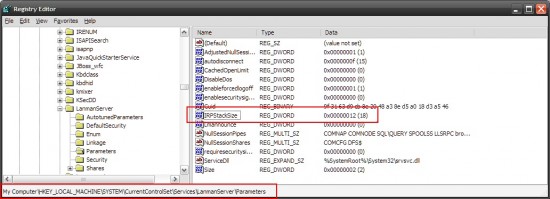Comcast has recently switched its provided-for-free antivirus vendor from McAfee to Norton Security Suite, from Symantec. The subscriptions to McAfee Security Suite are due to expire in May. (Norton is named after Peter Norton, a true god of early personal computing utilities back when DOS was king and before all the cool things Peter wrote got licensed by Microsoft for use within their operating systems.
Overall, this is probably a good move, as Symantec’s 2010 offering seems to have recovered its lagging performance, and surged ahead of McAfee in the ratings.
A month ago, I installed Norton on our mostly-gaming-and-homework computer to see how it would run. I hadn’t had any real problem with Norton, and it does seem to be less intrusive than McAfee was, doing most of its scanning during idle times. I also switched our church’s media computer over to use it, and had only one minor problem that a reboot fixed.
(I should interject that “the cloud” has allowed me to radically de-task my specific-machine-focused life, so that, for most of the things that were so critical before, it now doesn’t matter which computer I use. Our wilcoxfamily.net e-mail and calendar are hooked to Google Apps; my notes are in Evernote, frequently accessed files are in DropBox, and even remote access tasks can be handled through LogMeIn.)
Last night I decided to switch from McAfee to Norton on the computer that gets the most use at home. This is the one that hosts our shared printer. I ran the installer from Comcast for Norton, which automatically uninstalls McAfee, lets you reboot, and installs Norton. There didn’t appear to be any problems … until Isaac tried to print from the other machine, and got an error.
I checked the cables, successfully printed from the host machine, but nothing I did would fix the printing. I also discovered that trying to get to my host machine’s C drive from the network wouldn’t work (usually we do \{machinename}c$ to open it as a network share), although the D drive would open. I tried disabling the Norton firewall and anitvirus temporarily, but the network resources still wouldn’t connect.
I fired up a chat session with a Symantec representative named Srini, and he checked my spooler settings. Ultimately Srini wasn’t able to help. While this fairly slow support was going on, I hit the Web, searching for one of the error messages I received while trying to open the C drive, “Not enough server storage is available to process this command.” Among other results indicating the same problem, I found a KnowledgeBase article at Microsoft that describes the symptoms and a possible fix. I also discovered a number of posts suggesting that this was a relatively common problem with Symantec products, although other products or networking configurations can produce the same symptoms.
So, having nothing to lose, I took a stab at fixing the IRPStackSize property in my registry. In my case, the key didn’t exist, so I added it by using RegEdit to navigate to the HKEY_LOCAL_MACHINESystemCurrentControlSetServicesLanmanServerParameters key, and then added a new DWORD named IRPStackSize (the capitalization is important). I right-clicked on the new key, and edited the decimal value to 18 (hexadecimal 12). Then I restarted the computer, which is necessary for the change to work.

Upon restart, my network resources were accessible again, and printing to the shared printer worked perfectly. Tonight I’ll try to contact the Symantec representative again and let him know how this was fixed.

You have such a distributed life! I’m jealous.
Doug, post your login username and password info here for Google Apps, your home PC, and your banking site, and I can help.
I’ll walk you through how to install nosmoke.exe.
Why would I post those credentials online? After all, yours were so easy to obtain …